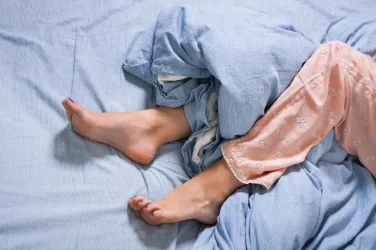
By ANnette Brooks
As the days grow shorter and the chill of winter sets in, it’s not uncommon to find yourself feeling sluggish and downcast occasionally. Yet, for some, it isn’t just a fleeting case of the “winter blues.” Instead, it may be Seasonal Affective Disorder (SAD).
What is Seasonal Affective Disorder?
SAD is a form of depression that follows a pattern, typically emerging in the late fall and winter and subsiding in the spring and summer. It’s believed to be triggered by reduced levels of sunlight. A subtype of major depressive disorder, SAD can significantly impair daily functioning.
Signs and Symptoms
According to HopkinsMedicine.org, SAD symptoms tend to come back and then improve at about the same times every year. These symptoms are consistent and can disrupt a person’s ability to work, socialize, and enjoy life. They include, but are not limited to:
Persistent low mood: Feeling sad or down most of the time.
Loss of interest: A lack of pleasure in activities once enjoyed.
Fatigue: Persistent tiredness and low energy, even with
adequate sleep.
Sleep disturbances: Oversleeping (hypersomnia) or difficulty waking up in the morning and daytime drowsiness or fatigue.
Appetite changes: Craving carbohydrates and gaining weight.
Difficulty concentrating: Trouble focusing, thinking clearly, or making decisions.
Social withdrawal: Avoiding social interactions and activities.
Causes and Risk Factors
While the exact cause of SAD is not fully understood, several factors are thought to contribute to the condition. It’s believed that a reduced level of sunlight in fall and winter can disrupt your body’s internal biological clock (circadian rhythm) and lead to feelings of depression. Additionally, reduced sunlight can cause a drop in serotonin, a brain chemical (neurotransmitter) that affects mood, which may trigger depression. It can also disrupt the body’s melatonin level, which plays a role in sleep patterns and mood.
Other factors increase the risk, including being female, living where there is less sunlight during winter months, having a family history of SAD or other forms of depression, and already having clinical depression or bipolar disorder.
Managing Seasonal Affective Disorder
Although SAD can be challenging, several treatments and strategies can help manage its symptoms. They include:
Light therapy, also known as phototherapy, involves sitting near a special light box that mimics natural sunlight for about 20 to 30 minutes daily. It’s one of the first-line treatments for SAD and may help significantly reduce symptoms.
Medication such as antidepressants, particularly selective serotonin reuptake inhibitors (SSRIs), may be effective in treating SAD. A healthcare provider can determine if this is an appropriate treatment.
Psychotherapy, such as cognitive-behavioral therapy (CBT), has been shown to help individuals manage SAD by changing negative thought patterns and behaviors.
Lifestyle changes, such as regular exercise, a healthy diet, and maintaining a consistent sleep schedule, can help improve mood and energy levels. Spending time outdoors and maximizing exposure to natural light during the day is also beneficial.
Additionally, some studies suggest that vitamin D supplementation can help alleviate symptoms of SAD, as low levels of this vitamin are common in people with the disorder.
Three Common Myths about SAD
Understanding the realities of Seasonal Affective Disorder is crucial for those affected and their loved ones. Dispelling myths like those below can lead to more effective treatment, greater empathy, and improved support for individuals dealing with this challenging condition.
Myth 1: SAD Only Occurs in Winter
Although SAD is most commonly associated with the winter months, a less common form, summer-onset SAD or “reverse SAD,” occurs in the spring and summer. Individuals with summer-onset SAD may experience symptoms such as insomnia, reduced appetite,
weight loss, and anxiety. The key characteristic of SAD is its seasonal pattern, not the specific time of year it occurs.
Myth 2: Only Women Get SAD
While SAD affects women at a rate four times higher than men, anyone can suffer from it, regardless of gender. Men’s symptoms can be just as severe. It’s important for everyone to seek help if they notice signs of seasonal depression.
Myth 3: You Can Just “Snap Out of It”
SAD is a medical condition, not a matter of willpower or attitude. Telling someone with SAD to “snap out of it” is not only unhelpful but can also be harmful. Like other forms of depression, SAD requires proper treatment and support. Encouraging someone to seek professional help is far more beneficial.











